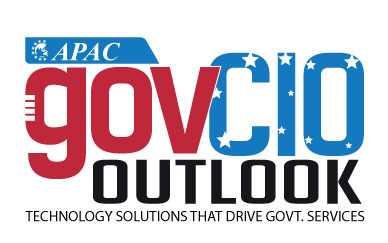Welcome back to this new edition of Gov CIO Outlook !!!✖
March - 20219GOVERNMENT CIO OUTLOOK1. Reassure: Leaders must role model "Self Certainty" People hate uncertainty. In fact, many of our employees express this in statements like, "I'd rather get COVID and move on", or "Can't we just get back to normal?" All leadership begins with self-leadership. When responding to the uncertainty we must be grounded in our internal values- such as integrity, optimism, community, courage, purpose, and compassion. We must provide hope, but not hype. The decision should be made based on facts and principles and not solely on the optics. 2. Foster Connection: Shared Sense of Purpose With continued calls for social distancing we must find ways to foster socialization among our employees (even if remotely). Connection is created through a shared purpose and emphasis on values. Right now, the employees in your charge are feeling very confronted by a common threat. While they may not be coming together physically due to the nature of this threat, letting everyone know that "We're all in this together, and we will get through it together" can build trust, grow loyalty and strengthen bonds in ways that can never be done in calmer times.3. Act inclusively: Lead from the Heart, not just the head Relationships are the currency of influence in any workplace. As leaders, we must continue to provide a sense of belonging and prioritize well-being. Leaders must be visible and intentional in their efforts to connect with employees. All employees what to know that you see them and that they matter. During crisis, leaders should be exceedingly human. Even though you don't have definitive answers to all of their questions, don't let that keep you from listening to them and empathizing with their fears. And, you should not be hesitant to share your own concerns with your people. They want to know that they can relate to you and that they are not alone in their concerns. You must also risk communication with your team. This is not a time to hold back. Send people updates and regular communication, even if there is not a lot of new information and the message is largely personal. No one will look back at this time and say, "my manager was so annoying with all the encouraging e-mails checking in on me." When people are isolated, over-communication is more important than ever. This approach will also help you kill conspiracies and misinformation as people desperately seek answers. 5. Show Decisiveness: Beware of waiting for clarity You want always to have all the facts and the facts as reported could change day by day. In a crisis, you are called upon to make the best decision you can right now, with what you currently know. People need bold decisive leadership in crisis and courageous leadership. Courage is acting despite the fear, not absence of fear. 6. Practice Agility: Build organizational resilience Don't miss the opportunities! Use the crisis as a catalyst for doing better business. 2020 has brought us many challenges but has also offered leaders numerous learning opportunities. It has demanded an evolution of how we work and what we learn. Consider what you should stop doing, and what you should start doing. Involve your people and collaborate with them to solve problems. Resist the urge to be dictatorial and make all the decisions. You'll soon realize the best decisions and ideas come from the bottom up.We are still early enough in the story of COVID-19 that leaders and organizations can shape the role they will play in the story told later. Leaders should make intentional choices to put self-interest aside in order to contribute to the greater good, where the human-centric approach is a priority. If history has taught us anything, it's that the worst of times can bring out the best in people -- individually and collectively -- stretching us to think more broadly and advance more intelligently. In the year ahead, those with people-centric workplace strategies that focus on talent, workforce flexibility, health, well-being, and the human experience will be the winners and leaders of organizations post-pandemic. There isn't a one-size-fits-all approach to implementing employee-centric workplace changes. The key is to be authentic and do what feels right for your people, culture, and organization, always using insights from your workforce to guide the needs of your organization. As leaders, by definition, we do our work through other people, and yet how easy it is to lose sight of that, to focus on the amount of work -- the tasks, the output, the jobs to be completed. The irony is, the more you focus on the quality of those human connections, and the greater your quantity of results is likely to be. There will be other crises to lead through and by focusing on the human-centric workplace you can lead your people with truth, hope, and confidence! In the year ahead, those with people-centric workplace strategies that focus on talent, workforce flexibility, health, well-being, and the human experience will be the winners and leaders of organizations post-pandemicCory Godwin
< Page 8 | Page 10 >
< Page 8 | Page 10 >
